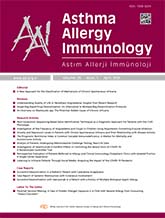


Blastocystis spp., the most common protozoan discovered in human feces, has affected about one billion people worldwide so far. Despite significant advancements in the epidemiology and diagnosis of the parasite, no consensus has been reached over the pathogenecity and treatment approach. The most common symptoms related to the protozoan include nausea, vomiting, diarrhea, bloating, weight loss, and intestinal gas. Dermatological symptoms, such as skin rash and urticaria, may coexist with gastrointestinal complaints. Blastocystis spp. has evolved as an emerging parasite around the world in recent times. Research has revealed that the prevalence in urticaria patients was 21.3-61.1%, whereas that in healthy volunteers was 8-29.41%. The studies conducted in Egypt produced the highest prevalence among urticaria patients. The prevalence of Blastocystis spp. varied between 5.69 and 31.9% in urticaria patients and 1.56 and 14.8% in healthy individuals in Türkiye. The most prevalent subtype was subtype 3 worldwide and in Türkiye. Urticaria patients were generally shown to have a higher prevalence of Blastocystis spp. than control groups. Moreover, it was shown that urticarial lesions and urticaria scores improved in patients treated with metronidazole who had Blastocystis spp. Blastocystis spp. could be a part of a healthy microbiota, but there is also research that indicated Blastocystis spp. reduced the amount of beneficial bacteria. Gut microbiota in people with chronic urticaria shows a decrease in the diversity of the gut bacteria besides an increase in organisms that are usually referred to as pathogens, including Proteobacteria, Enterobacterales, Enterobacteriaceae, and Bacilli. Furthermore, by modifying the intestinal microbiota, Blastocystis spp. may indirectly contribute to the etiopathogenesis of urticaria. However, this relationship has not been searched yet, and further investigation is required to assess the correlation between the microbiota and Blastocystis spp. in patients with urticaria.